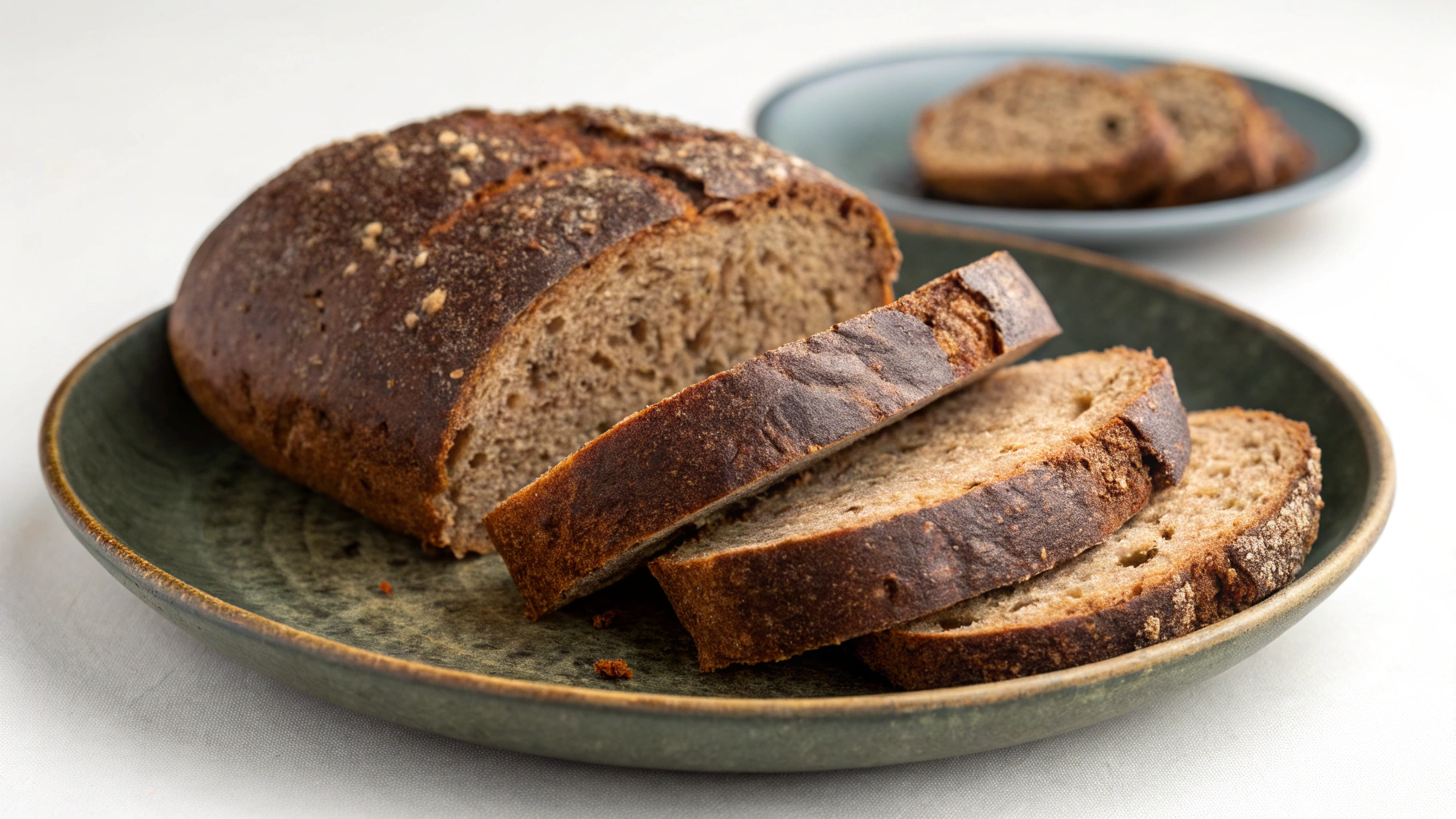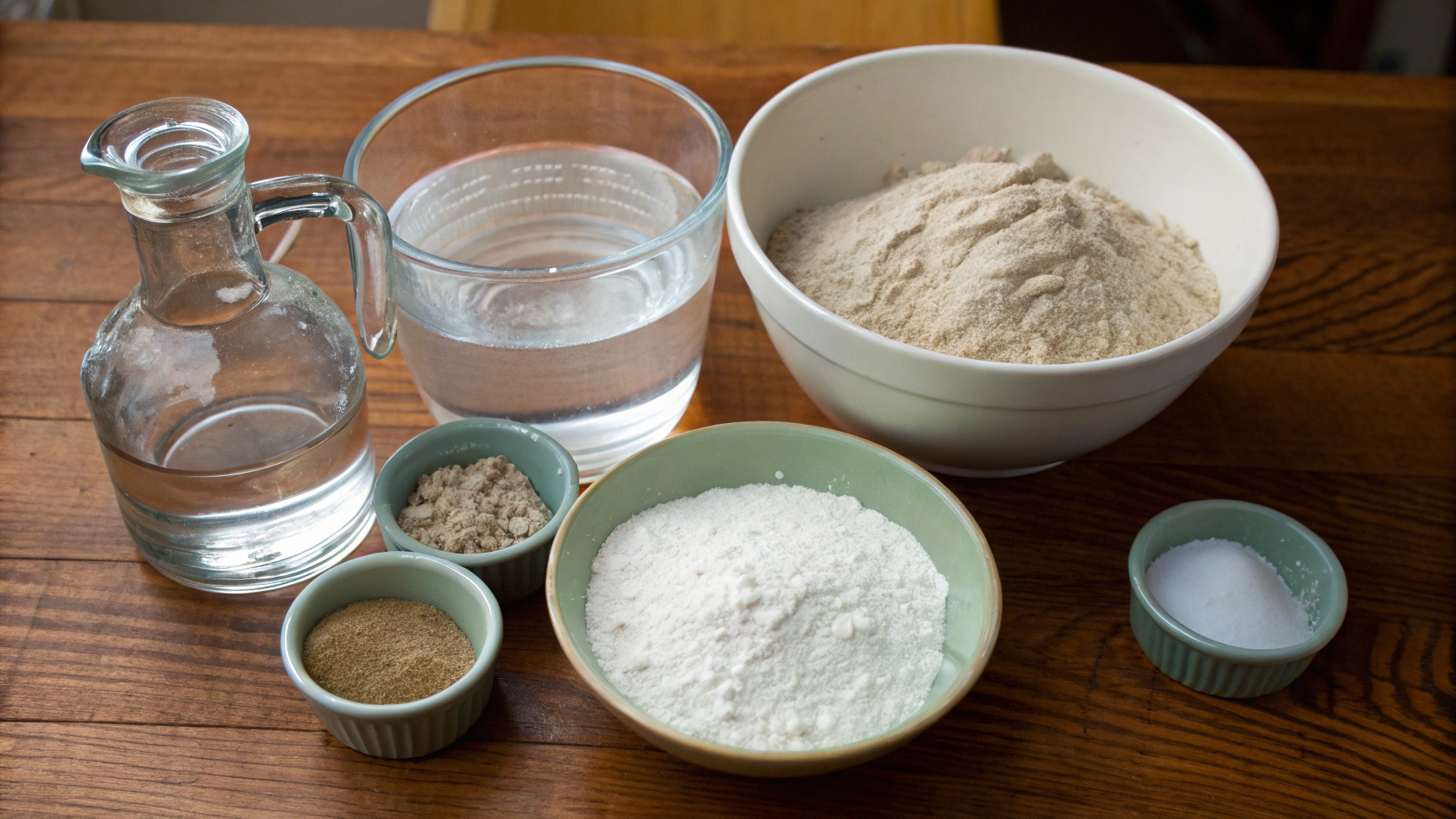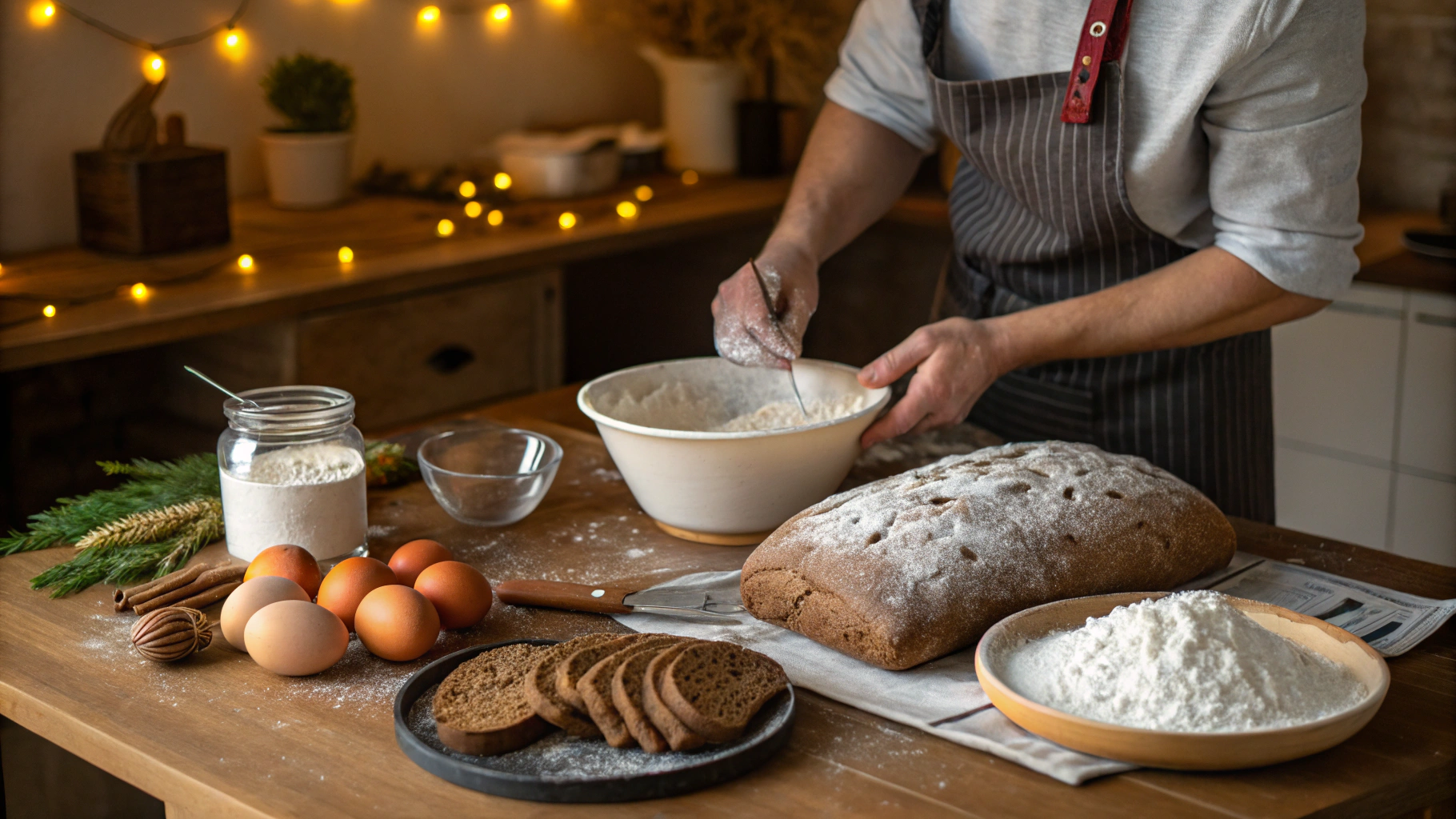Did you know that traditional Chleb Żytni can stay fresh for up to a week, making it three times more shelf-stable than typical wheat bread? This Polish rye bread staple has been sustaining generations with its distinctive sour flavor and dense, nutritious crumb.
Today, we're diving into the art of creating authentic chleb żytni na zakwasie (sourdough rye bread) that will transform your home baking experience. Whether you're a seasoned baker or trying your hand at artisanal bread for the first time, this comprehensive guide will help you master the perfect loaf of Chleb Żytni.
Ingredients List
For the perfect Chleb Żytni, you'll need:
- 500g rye flour (preferably dark rye for authentic flavor)
- 300g active rye sourdough starter (100% hydration)
- 350ml filtered water (room temperature)
- 12g sea salt
- 1 tablespoon caraway seeds (optional, but traditional)
- 1 tablespoon molasses or honey (enhances flavor complexity)
- 2 tablespoons sunflower seeds (for texture and nutrition)
- Rye flour for dusting
Substitution options: No rye starter? Begin with 2 tablespoons of mature sourdough starter mixed with rye flour and water, fed daily for 3-5 days. Whole wheat flour can replace up to 20% of the rye flour for a lighter texture.
Timing
- Preparation time: 30 minutes (active work)
- Proofing time: 8-12 hours (primarily overnight)
- Baking time: 50-60 minutes
- Total time: 9-13 hours (only 90 minutes require your attention)
This timeline is approximately 25% longer than wheat bread recipes, but the extended fermentation is what develops the characteristic tang and depth of flavor in authentic Chleb Żytni.
Step-by-Step Instructions
Step 1: Prepare Your Starter
Ensure your sourdough starter is active and bubbly before beginning. Feed it 12 hours before baking day. A properly mature starter should double in size and pass the float test (a small amount should float when placed in water).
Step 2: Create the Dough
In a large bowl, combine the rye flour, water, active starter, molasses, and seeds. Mix until thoroughly incorporated—rye dough will be stickier and less elastic than wheat dough, so don't expect the same consistency. Add salt last, mixing thoroughly.
Step 3: Develop Structure
Unlike wheat breads, rye dough doesn't require extensive kneading. Instead, use the "stretch and fold" method: every 30 minutes for 2 hours, wet your hands, then gently pull the edges of the dough toward the center. This develops structure while respecting rye's unique gluten properties.
Step 4: Bulk Fermentation
Cover your dough with a damp cloth and allow it to ferment at room temperature (68-72°F) for 4-6 hours. Rye ferments faster than wheat, so watch for a 30-40% increase in volume rather than doubling.
Step 5: Shape Your Loaf
Generously dust a proofing basket (banneton) or cloth-lined bowl with rye flour. Using wet hands, gently form the dough into a round or oval shape without degassing it too much. Place it seam-side up in your proofing vessel.
Step 6: Final Proof
Cover and refrigerate for 8-12 hours (overnight). The cold fermentation develops flavor and makes the dough easier to handle. Traditionally, Polish bakers would proof rye bread in cool cellars to achieve similar results.
Step 7: Bake to Perfection
Preheat your oven to 450°F (230°C) with a Dutch oven inside. When hot, carefully turn your dough onto parchment paper, score the top with a sharp knife, and transfer to the preheated Dutch oven. Bake covered for 25 minutes, then uncovered for 25-30 minutes more until the internal temperature reaches 205°F (96°C).
Step 8: Cooling Period
The most overlooked yet crucial step: allow your Chleb Żytni to cool completely for at least 4 hours before slicing. Rye bread continues to set during cooling, and cutting too soon will result in a gummy texture.
Nutritional Information
Per 100g serving of traditional Chleb Żytni:
- Calories: 220
- Protein: 8.5g
- Carbohydrates: 45g
- Fiber: 7.8g (nearly twice the fiber of white bread)
- Fat: 1.2g
- Iron: 15% of daily requirements
- B vitamins: Significant source of B1, B3, and B6
Healthier Alternatives for the Recipe
- Replace molasses with stevia and cinnamon for a lower-sugar option
- Add 2 tablespoons of ground flaxseed to increase omega-3 fatty acids
- Incorporate 1/4 cup pumpkin seeds for additional zinc and magnesium
- Use 20% sprouted rye flour to enhance digestibility and nutrient availability
Serving Suggestions
- Classic Polish style: Thick slice with cultured butter and aged cheese
- Modern brunch: Topped with avocado, microgreens, and poached egg
- Traditional accompaniment: With barszcz (beet soup) for an authentic pairing
- Scandinavian-inspired: With smoked salmon, dill cream cheese, and cucumber
Common Mistakes to Avoid
- Expecting wheat-like dough: Rye behaves differently due to lower gluten content and higher amylase activity
- Overhandling the dough: Excessive manipulation destroys rye's delicate structure
- Skipping the long fermentation: Rushing reduces flavor development and digestibility
- Cutting too soon: Patience during cooling is essential for proper texture
Storing Tips for the Recipe
Store your Chleb Żytni wrapped in breathable cloth at room temperature for up to 5 days. For longer storage, slice the completely cooled bread and freeze in airtight bags for up to 3 months. Refresh frozen slices by toasting or briefly warming in a 300°F oven.
Conclusion
Mastering Chleb Żytni connects you to centuries of baking tradition while providing incredible flavor and nutritional benefits. The process may seem lengthy compared to commercial bread, but the results—a rustic, deeply flavorful loaf with exceptional keeping qualities—are well worth the effort. What will you serve with your homemade Polish rye bread?
FAQs
Why is my rye bread so dense?
Rye naturally produces denser bread than wheat due to its lower gluten content. For a slightly lighter loaf, replace up to 20% of rye flour with bread flour.
Can I make this bread without sourdough starter?
Traditional chleb żytni na zakwasie requires a starter, but you can begin yours from scratch with rye flour, water, and 5-7 days of patience.
Is rye bread healthier than wheat bread?
Typically yes. Rye contains more fiber, more diverse nutrients, and has a lower glycemic index than most wheat breads.
Why does my rye bread crack during baking?
This is normal and traditionally considered a sign of good bread. Control it by proper scoring before baking.
How can I make my rye bread more sour?
Extend the cold fermentation to 16-24 hours for a more pronounced tangy flavor.









